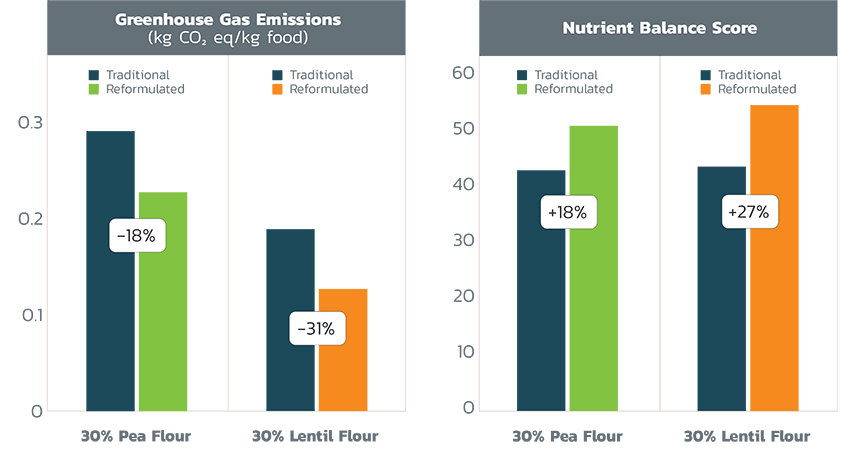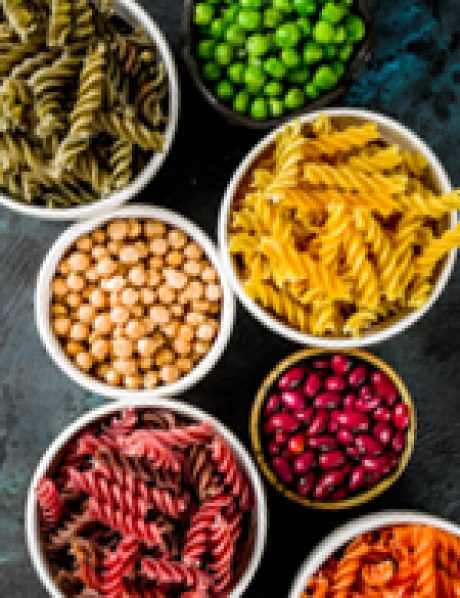Pasta & Noodles
Pulses and pulse ingredients can improve the protein quality of traditional pasta and noodle products, while also lowering the carbon footprint of the product.

Using Pulse Ingredients in Pasta
Pulse flours can be incorporated into pasta with similar quality attributes as 100% durum wheat products, but with improved sustainability and nutritional profiles. Combining pulses with wheat or other cereals produces a higher quality, more complete protein that may qualify for source of protein label claims. Pulse flours such as pea and lentil flour can also be used alone or in combination with other grains for a gluten-free alternative.

For example, pasta reformulated with 30% Canadian pea or lentil flour shows improved nutrient balance scores (a measure of nutrient density in foods) and lower greenhouse gas emissions.

Functional Considerations
Adding pulse flours to wheat-based pastas can result in a range of product quality attributes from increased firmness and cook losses, to darker colour and longer cook times. To accommodate pulse inclusion, processing parameters can be modified during dough preparation, extrusion processing or drying conditions. Depending on the target market, inclusion of pulse flours has been shown to be acceptable, and fortification of 20-100% pulse flour can produce pastas of high quality with elevated protein levels. Including additives such as gluten, hydrocolloids or surfactants may also optimize quality of pulse pastas.
Using Pulse Ingredients in Noodles
Noodles, both rice and wheat-based are popular, traditional Asian foods consumed around the world. Studies have shown successful inclusion of pulse flours of up to 35% into white salted noodles and up to 50% in rice-based noodles. Nutritional profile is enhanced in both cases with the pulse-rice or pulse-wheat blend improving amino acid balance through complementation of cereal and pulse amino acids, as well as increasing the total dietary fibre content.
Wheat noodles containing 35% pea flour have demonstrated similar firmness to regular wheat noodles, while lentil inclusion resulted in a less firm texture. Due to the increased water absorption capacity of pulse flours, water levels need to be adjusted to produce doughs of acceptable quality.
In contrast, the addition of lentil flour to rice noodles resulted in increased noodle firmness. The extrusion process used to produce rice-lentil noodles can cause retrogradation of pulse starches making them resistant to breakdown by digestive enzymes which may lead to a lower glycemic index (GI) food.
Looking for more information on using pulses in pasta or noodles?
